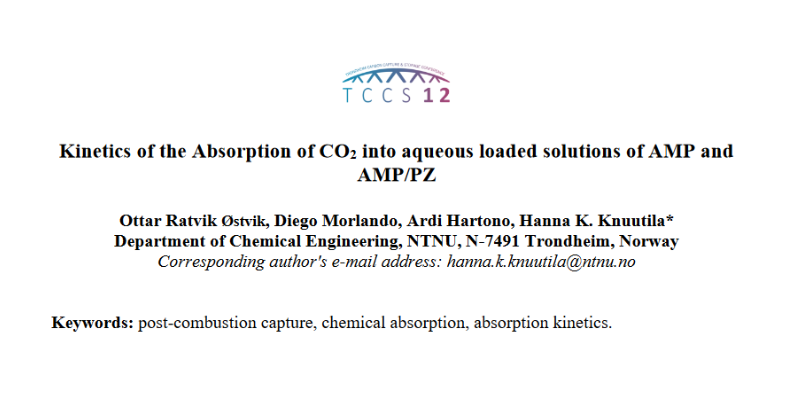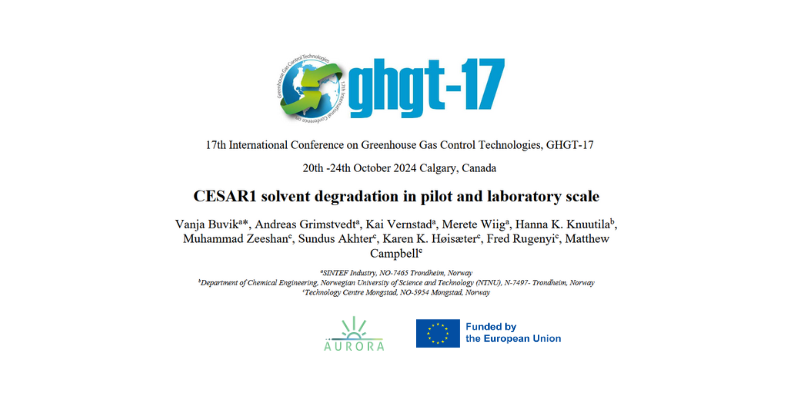Abstract
Amine-based absorption is currently the most advanced and cost-effective means of postcombustion CO2 capture among the different technologies that can be used (Dutcher et al., 2015). Much work has been done to reduce energy consumption, which constitutes one of the major penalties to the absorption process. Therefore, when it comes the need to develop new energyefficient solvents for the successful implementation of CO2-capture worldwide. An alternative to the widely used ethanolamine (MEA) is an aqueous solution of 2-amino-2-methyl-1-propanol (AMP), promoted with piperazine (PZ). It has been demonstrated that an aqueous blend 3.0 M AMP/ 1.5 M PZ, known as CESAR1, exhibits lower energy consumption (Mangalapally and Hasse, 2011), lower degradation rates (Lepaumier et al., 2009), and higher loading capacity
compared to MEA (Choi et al., 2007).
Keywords: post-combustion capture, chemical absorption, absorption kinetics.
Authors: Ottar Ratvik Østvik, Diego Morlando, Ardi Hartono, Hanna K. Knuutila (Department of Chemical Engineering, NTNU, N-7491 Trondheim, Norway)
Understanding Solvent Degradation in CO₂ Capture – CESAR1 Solvent Degradation in Pilot and Laboratory Scale
The fight against climate change requires innovative solutions, and one promising method is CO₂ capture and storage (CCS). CCS involves…
Turning Waste Into Opportunity: Thermal Reclamation Chemistry of Common Amine Solvents
CO2 capture technology is vital for reducing greenhouse gas emissions. But what happens when the chemicals used in this process…
Closing Knowledge Gaps – Density and Viscosity of Unloaded and CO2-loaded Aqueous AMP-PZ blends
AURORA’s latest scientific journal publication provides experimental density and viscosity data on different unloaded and CO2-loaded aqueous blends of 2-amino-2-methyl-1-propanol…
Unlocking New Potential of CESAR1-based chemical absorption Technology: Available data and knowledge gaps of the CESAR1 solvent system
AURORA latest review paper, developed in collaboration with researchers from SINTEF and NTNU, provides a comprehensive analysis of the CESAR1…
Conference publication – Optimal Control of Industrial Solvent-Based CO2 Capture Plants Conference publication
This publication, prepared by our project partners Cybernetica and SINTEF Industry, is a proceeding from the 34th European Symposium on…






